
Stop overpaying - start transferring money with Ogvio. Sign up, invite friends & grab Rewards now! 🎁
When it comes to trading crypto, you’re probably familiar with big names like Binance, Kraken, and Bybit. Each offers its own unique features, but what if you’re looking for something a bit different? That’s where GMX comes in. If you’ve been wondering what makes GMX stand out, you’re in the right place. Get ready to learn more about this intriguing DEX platform.
In this review, I'll cover everything you need to know about what is GMX crypto exchange and what it offers. Whether you’re a seasoned trader or just starting, this application might have something new and useful for you. So, let’s dive into this GMX review and explore how it compares to the other popular exchanges out there.
Verdict at a glance: GMX offers a decentralized trading experience with several standout features, like high leverage options (up to 50x), transparent fee structures, and a governance token that empowers users. Built on Arbitrum and Avalanche, GMX prioritizes security through regular audits and bug bounties. However, as a DEX, it comes with unique risks, including smart contract vulnerabilities and limited liquidity compared to larger centralized exchanges.
Pros
- A decentralized exchange
- Up to 50x leverage trading
- Has a governance token
- Intuitive interface
Cons
- Fairly limited coin options
- Smart contract risks
Table of Contents
- 1. What is GMX?
- 1.1. GMX’s Position in the Crypto Industry
- 2. Is GMX Safe?
- 3. GMX Review: PROS
- 3.1. Decentralized Exchange
- 3.2. Up to 50x Leverage Trading
- 3.3. Governance Token
- 3.4. Intuitive Interface
- 4. GMX Review: CONS
- 4.1. Limited Coin Options
- 4.2. Smart Contract Risk
- 5. GMX Fees
- 5.1. GMX V1 Fees
- 5.2. GMX V2 Fees
- 5.3. DYdX VS GMX Fee Structure
- 6. GMX Features
- 6.1. Leverage Trading
- 6.2. Swap Trading
- 6.3. Market, Limit, and TP/SL Orders
- 6.4. GMX Staking
- 7. How to Use GMX?
- 8. Conclusion
What is GMX?
GMX is a decentralized exchange (DEX) that offers spot and perpetual trading on the Arbitrum and Avalanche blockchains. The GMX exchange was founded in 2021 by an anonymous team, but it is believed that "@xdev_10" on X is the lead developer (or at least one of the developers). Now that you have a bit of background, let’s dive into the core features that set this platform apart.
One standout feature of GMX is its oracle-based system. Rather than depending solely on its own data, the platform leverages Chainlink oracles, which provide real-time price feeds from various sources. This setup ensures that prices are accurate and up-to-date, helping traders make more reliable decisions without the risk of price manipulation—a big plus for any DEX.
Another highlight is the platform’s balanced liquidity pool. Designed for flexibility, this pool supports both spot and leveraged trading, which means that you can trade assets directly or take positions with leverage. This balanced design keeps liquidity flowing smoothly and reduces the chances of slippage, which is a win-win for traders aiming to execute quick, high-value trades.

Then, there’s the GMX governance token. If you hold GMX tokens, you gain voting rights on platform changes and decisions—so users have a say in the application's future direction. Lastly, when it comes to fees, GMX trading keeps it competitive. The platform’s low fees are designed to make it more affordable and appealing to both high-frequency and occasional traders.
However, keep in mind that leverage trading is not for everyone because it can amplify both gains and losses, quickly turning a small mistake into a costly setback. So, if you’ve been wondering, “What is GMX crypto exchange?”—this is a DEX with a thoughtful structure aimed at keeping trading efficient, fair, and cost-effective.
GMX’s Position in the Crypto Industry
When looking at GMX’s standing in the DEX world, it’s clear this platform has made an impact. With over 669,000 total users, it has carved out a solid base of traders who appreciate its unique offerings and user-friendly approach. In this GMX review, it’s worth noting that few DEXs reach this level of popularity and trust in a relatively short period.
In terms of trading volume, the platform has exceeded $235 billion—a massive milestone that speaks volumes about its appeal and reliability. This showcases just how active the GMX exchange is and the level of confidence users have in it. On top of that, the platform currently has an open interest of around $260 million, underscoring its liquidity and strong market position.
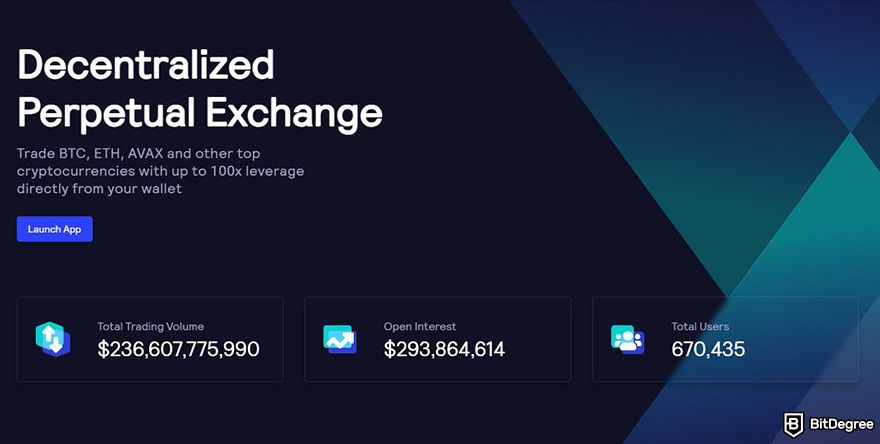
Compared to other decentralized exchanges, GMX trading stands out not only for its volume but also for its user-focused features, which have clearly resonated with the community.
Is GMX Safe?
Knowing the crypto exchange you’re using is safe should be your top priority. Since GMX is a decentralized exchange, it comes with some inherent security risks, like smart contract vulnerabilities and liquidity pool risks. Fortunately, the platform has implemented various security measures to help mitigate these risks, including:
- Regular security audits: The GMX contracts undergo regular security audits to identify and address potential vulnerabilities. The audit results are available for the public and you can read them on their repository.
- Bug bounty programs: GMX rewards individuals reporting security vulnerabilities, incentivizing responsible disclosure. The platform has an active bug bounty program listed on Immunefi.
Additionally, transparency is essential for building trust in any crypto exchange, and GMX does a commendable job of sharing information openly. When you can access clear details about a platform’s inner workings—like audit results, tokenomics, and governance processes—it’s a lot easier to feel confident about using it.
The platform makes much of its documentation publicly accessible, which isn’t something every exchange prioritizes. For a decentralized platform, this level of openness is reassuring and signals that they’re committed to user safety.
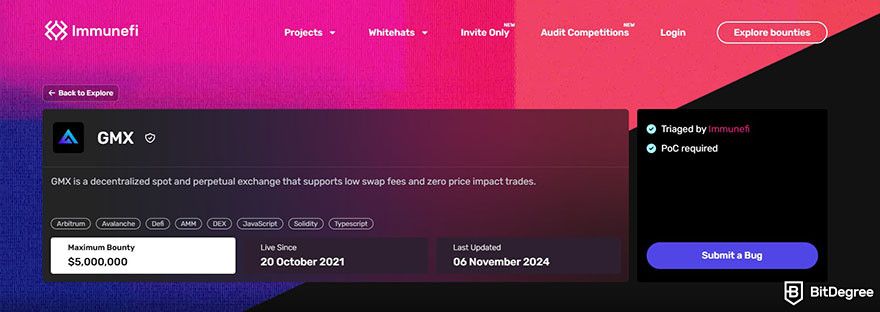
By keeping their community informed and offering insights into how the platform operates, GMX creates a safer trading environment. Transparency isn’t just a bonus. It’s an essential factor that helps users trust the application with their assets and transactions.
So, suppose you’re considering trading on GMX. In that case, you can rest assured that this DEX is upfront about its security measures, governance, and financial models, giving you a better foundation for making informed trading decisions.

Did you know?
All Crypto Exchanges may look similar to you but they're NOT all the same!
GMX Review: PROS
As we’ve explored in this GMX review, there’s a lot to appreciate about the trading platform. Between its user-friendly design, transparency, and security measures, GMX has built a strong foundation that appeals to both new and experienced traders. But like any exchange, weighing the pros and cons before diving in is important.
So, let’s take a closer look at what makes GMX stand out and see how it stacks up against other platforms in the decentralized exchange space.
Decentralized Exchange
One of the biggest advantages of GMX is that it’s a decentralized exchange, meaning it operates without a central authority[1]. Unlike centralized exchanges like Binance, Kraken, or Bybit, which hold your assets and require you to trust them for security, DEXs like GMX allow you to trade directly from your wallet, giving you full control over your assets.
In this GMX review, I found that decentralized setup not only enhances security but also reduces dependence on any single entity, making it an attractive choice for those who prioritize self-custody.
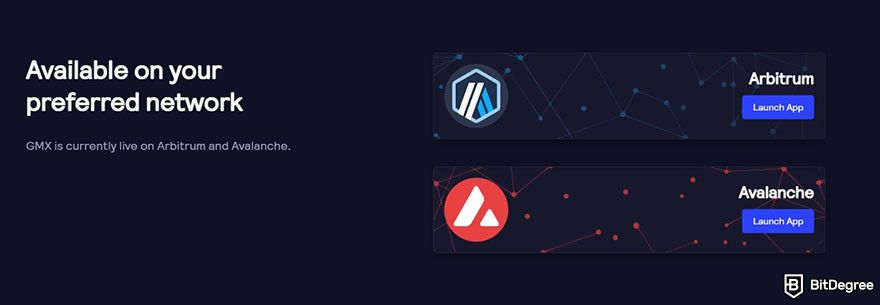
GMX is built on Arbitrum and Avalanche, two blockchain networks known for their scalability and low transaction costs. Running on these blockchains means the platform benefits from faster speeds and lower fees, enhancing the trading experience. With Arbitrum’s roll-up technology and Avalanche’s efficient consensus, users can enjoy a smoother and more cost-effective trading environment.
As for GMX’s evolution, the platform launched with V1 and has since upgraded to V2. While the former focused on establishing core trading features and reliable price oracles, the latter introduced a range of improvements. This includes more flexible liquidity pools and enhanced user experience.
This shift allowed the platform to continue reducing GMX fees while making it more accessible and functional for users. These developments underscore GMX’s commitment to improving its platform as the crypto space evolves.
Up to 50x Leverage Trading
One of GMX’s standout features is the high leverage it offers—up to 50x. This means that you can control a position worth up to fifty dollars for every dollar you trade. As a result, amplifying both potential gains and risks. In this GMX review, let me break down how leverage works in a way that’s easy to understand.
Imagine you’re trading with 10x leverage. Let’s say you put down $100; with 10x leverage, you’re now controlling a $1,000 position. If the asset’s price increases by 10%, your $1,000 position would rise to $1,100, giving you a $100 profit—effectively doubling your initial investment. However, if the price drops by just 10%, you’d lose your entire $100 since the loss is magnified.
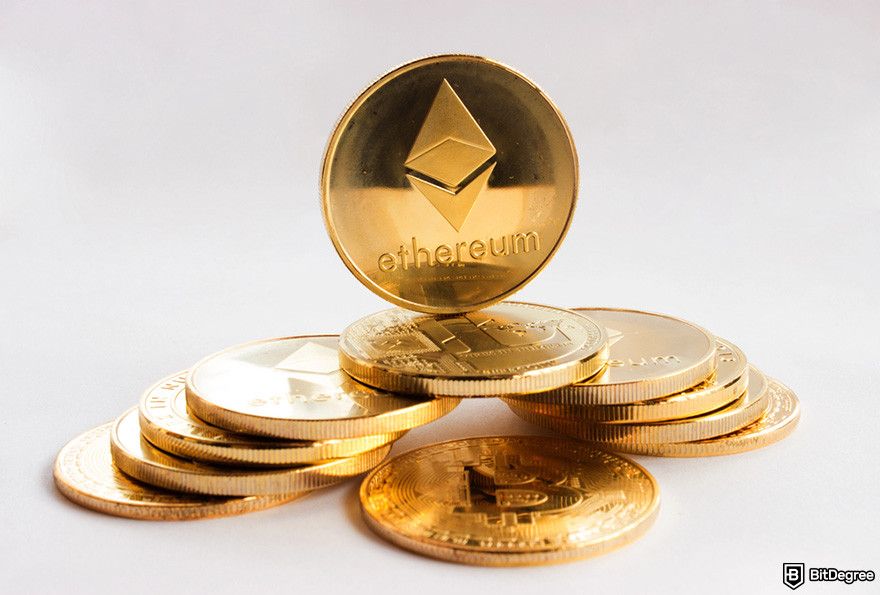
While high leverage can lead to big profits, it also carries significant risks. A small price movement in the wrong direction can lead to major losses, which is why leverage trading is often not ideal for beginners or casual traders.
It’s easy to get excited about high returns, but in this GMX review, I want to emphasize that high leverage is best suited for experienced traders who can manage the risk effectively. That said, the exchange provides an exciting option for those seeking leveraged trading, but it’s crucial to approach it with caution and a solid understanding of the potential downsides.
Governance Token
A key highlight of the exchange is its governance and utility token, GMX, which allows users to shape the platform’s future. At the time of this review, the token has a total supply of approximately 9 million and a market cap of $255,707,605. The supply is allocated as follows: 61% is staked, 34% is unstaked, and 5% resides in liquidity pools.
Staking is popular among users because it allows them to earn rewards and participate in governance, helping them feel like more than just traders—they’re contributors to the platform’s direction.
Governance tokens are designed to give holders voting power in a platform’s decision-making process. Simply put, holding a governance token is akin to having a say in a company’s board decisions — but on a decentralized level. In the case of GMX, those who stake their tokens (or esGMX) on the platform may receive GMX_DAO tokens on a 1:1 basis.
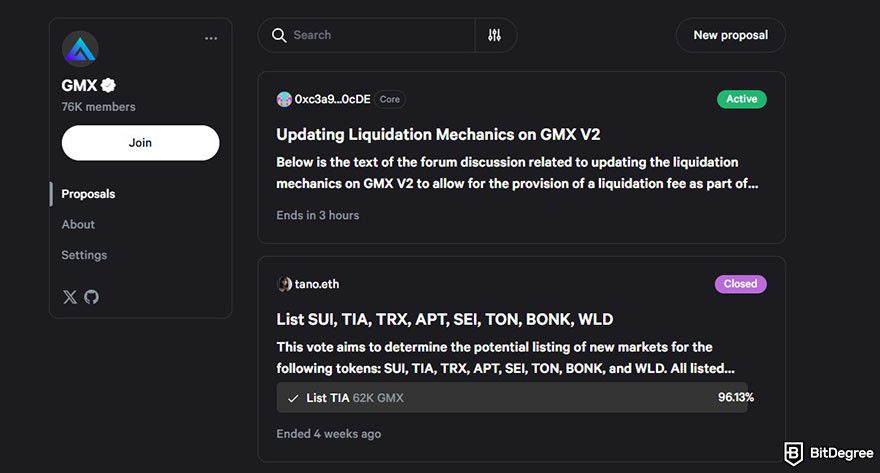
With these tokens, they can vote directly on proposals or choose a delegate to vote on their behalf, contributing to decisions on everything from platform upgrades to fees.
Additionally, GMX offers two types of liquidity provider tokens. GLP for V1 liquidity pools and GLV for V2 vaults. These tokens not only support liquidity but also bring a sense of community involvement, allowing users to feel like active participants in the GMX ecosystem.
Intuitive Interface
GMX also has a sleek and easy-to-use user interface. This aspect is crucial, especially for newcomers to the world of DeFi, as it can significantly lower the barrier to entry.
The platform's clean and well-organized layout allows users to navigate seamlessly between different sections, such as trading, liquidity provision, and governance. The dashboard provides a clear overview of essential information, including account balance, open positions, and recent transactions.
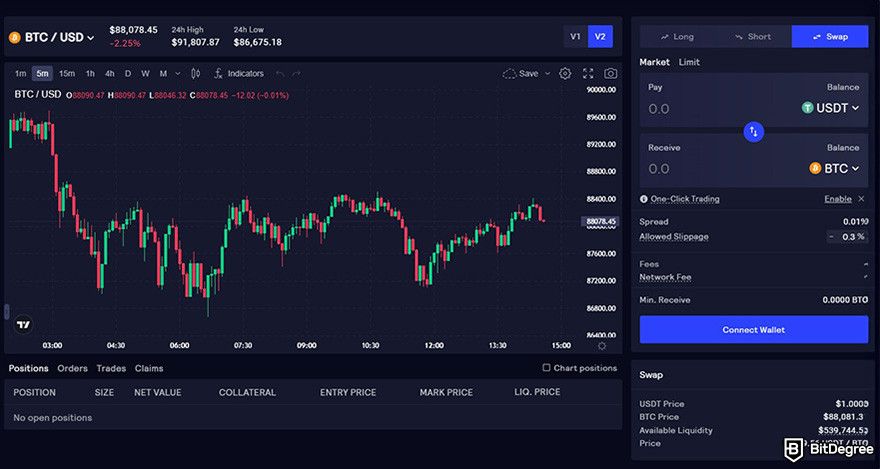
GMX's intuitive design is particularly evident in its trading interface. The order book and chart are easy to read and interpret, even for those without extensive trading experience. The platform also offers a variety of trading tools, such as stop-loss and take-profit orders, to help users manage risk effectively.
GMX Review: CONS
Now that I've covered the platform's pros in this GMX review, it's time to address the cons. I believe it’s essential to consider these potential drawbacks to get a balanced view of what it offers.
Limited Coin Options
While the platform offers a seamless trading experience, I don't think it is a great exchange for those who value access to extensive coin options. At the moment of writing this GMX review, the application offers fairly limited cryptocurrency support. The v1 perpetual trading has a whopping 4 coins for both the Avalance and Arbitrum network options. Take a look at this list:
Avalanche | Arbitrum |
|---|---|
ETH/USD | AVAX/USD |
BTC/USD | ETH/USD |
LINK/USD | BTC/USD |
UNI/USD | WBTC/USD |
Table: the list of available trading pairs on GMX V1 for Avalanche and Arbitrum network.
The spot trading feature gives you more options at 10 coins (Arbitrum) and 7 coins (Avalanche). These options include stablecoins like USDT and DAI.
Fortunately, although not significant, the V2 offers more trading pairs for you to choose from. At the time of writing this GMX review, there are 31 trading pairs listed on the V2 trading platform, which includes some meme coins like DOGE, WIF, and kPEPE.
This offering is far more limited compared to other popular exchanges like Binance and Bybit, which support hundreds or even thousands of coins. So, if you want the ability to invest in lesser-known assets, I suggest exploring other options.
Smart Contract Risk
One of the primary concerns associated with using a decentralized platform like GMX is the potential for smart contract risks. Since the exchange operates through smart contracts on the blockchain, every transaction, trade, and liquidity pool interaction relies on the code that underpins these contracts.
In this GMX review, I want to highlight that while smart contracts are incredibly efficient and secure in theory, they can also be vulnerable to bugs or malicious exploits[2].

If a flaw exists in the contract’s code, it could potentially allow hackers to drain funds or manipulate the system, impacting users across the platform. Although the GMX team has taken significant steps to ensure contract security—such as regular audits and a bug bounty program—there’s still an inherent risk that comes with the territory.
Unlike centralized exchanges, where security breaches may be mitigated by the platform’s reserve funds or insurance, DEX users are often at greater risk since they’re fully reliant on the security of the underlying code.
If you're interested in using the GMX trading features, it's crucial to keep these risks in mind. Always do your own research and assess your risk tolerance before committing to a DEX. That said, while the GMX platform is generally secure, smart contract vulnerabilities are always a possibility.
GMX Fees
The fee structure is one thing that you shouldn’t miss when reading a GMX review. Knowing what you’ll have to pay when using an exchange platform is important because you can avoid getting unexpected charges during transactions.
I’m happy to report that GMX provides a transparent fee structure on its documentation page. It is worth mentioning that V1 and V2 have different fee structures, so I will talk about them separately.
GMX V1 Fees
Let’s start by breaking down the GMX fees for V1. First off, to open or close a position, the platform charges a fee of 0.1% based on the position’s size. This applies to both long and short positions, making it relatively predictable and straightforward.
For long positions, your collateral is the asset you’re trading. So, if you’re going long on ETH, for example, your collateral will be ETH itself. Conversely, collateral needs to be a stablecoin for short positions, such as USDC, USDT, DAI, or FRAX. This structure helps keep things balanced and ensures you’re using the appropriate assets depending on the direction of your trade.
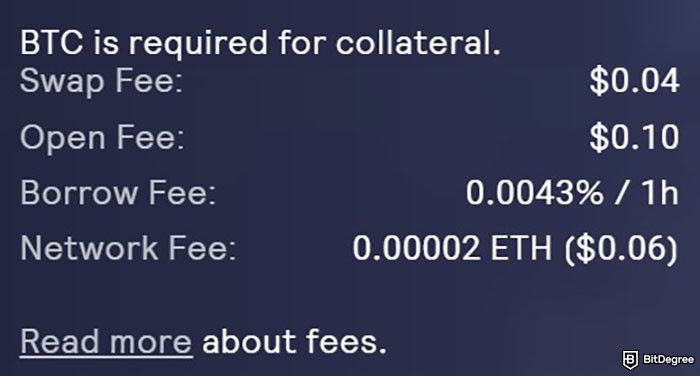
Sometimes, a swap is needed when you open or close a position, which incurs an additional charge. The fees can range from 0.2% to 0.8%, depending on whether the swap helps balance the pool. This flexibility makes GMX an appealing choice, though it’s worth calculating these costs beforehand.
Finally, there’s a network fee, which covers the blockchain transaction costs. The additional charges may change depending on several factors, like network congestion and gas prices. I think these GMX fees are generally reasonable compared to other DEXs, but it’s good to factor them in when planning your trades.
GMX V2 Fees
Now, let’s go over the GMX fees for V2, which offer some changes from V1 and provide traders with a range of cost-efficient options.
Opening or closing a position on GMX V2 involves a small trading fee. It ranges from 0.05% to 0.07% of the position size. Specifically, if your trade balances the platform’s long and short positions, the charge is lower at 0.05%. Otherwise, the fee is 0.07%. This applies whether you’re increasing the size of an open position or partially reducing it.
Moreover, standard token swaps incur a 0.05% fee if they improve liquidity balance in the pool and 0.07% if they don’t. If you’re swapping stablecoins, the fees are even lower—ranging from 0.005% to 0.02%, depending on the pool balance. This makes stablecoin transactions especially cost-effective.
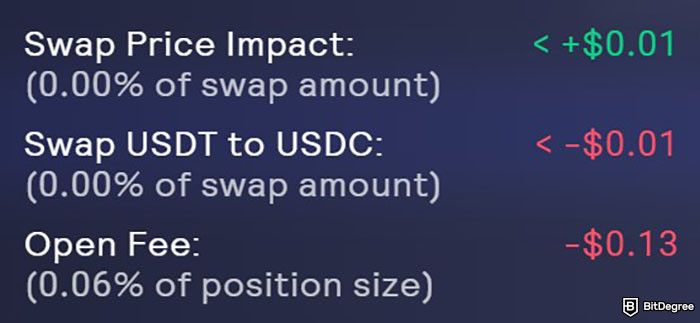
Another unique aspect is the borrowing fee. It was introduced to prevent all liquidity from being reserved by users holding equal long and short positions. If there’s an imbalance—say, more long positions than short ones—then long position holders pay a borrowing fee. This additional charge adjusts based on liquidity needs, encouraging more liquidity if it’s low.
Finally, like V1, there’s a network fee to consider, labeled “Max Network Fee” in the interface. It covers blockchain network costs and is slightly overestimated to handle any gas price surges. After order execution, any excess is refunded to your account, and you can tweak the estimation settings as needed.
These structured GMX fees make the platform fair and efficient, ensuring that both traders and the liquidity pool are well-supported. The model keeps costs manageable, which is a definite perk for regular traders on the GMX platform.
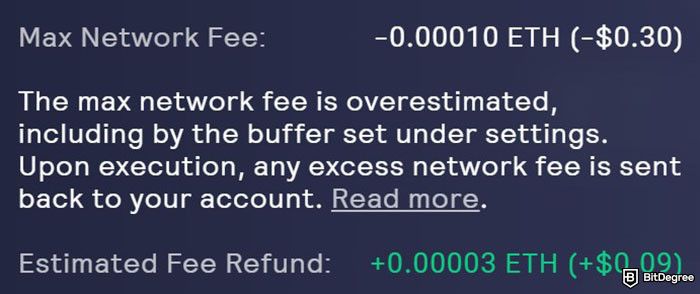
I admit that reading through the GMX fees explanation for the first time might make it seem complicated, especially if you are a beginner. However, once you execute a transaction, it’s very intuitive. You can check all the associated fees in detail before completing a trade.
Additionally, I think the comprehensive explanation of charges on its documentation page is a big plus for the platform. It helps users understand what they need to pay and how the fees are calculated. This transparency is crucial for informed decision-making and helps build trust with the user community.
DYdX VS GMX Fee Structure
To help you understand whether or not GMX fees are competitive, let’s see the comparison between dYdX VS GMX. For those who don’t know, the former is a decentralized exchange built on the Ethereum blockchain, focusing on derivatives trading.
When it comes to fees, dYdX VS GMX takes different approaches that cater to different types of traders. As you may already know, the latter keeps things straightforward with a flat trading fee, usually around 0.05% or 0.07%, depending on how the trade impacts the platform’s liquidity.
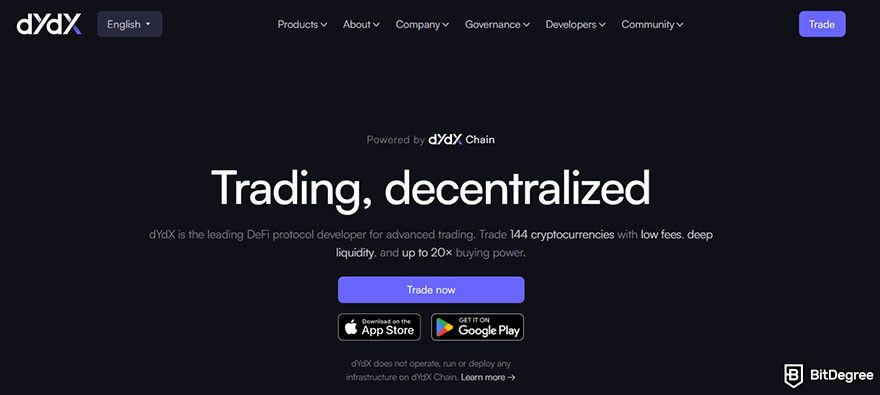
On the other hand, dYdX uses a tiered maker-taker system that rewards high-volume traders with discounts. For example, if you’re new to the platform or trading less than $1 million over 30 days, you’d pay 0.020% as a maker and 0.050% as a taker. But as your trading volume goes up, the rates go down—eventually reaching 0% for makers at the highest VIP level.
When I look at dYdX VS GMX, I’d say the latter's flat rate could be more appealing for casual or mid-level traders who aren’t pushing huge volumes. Meanwhile, dYdX’s fee discounts make it an attractive choice for frequent, high-volume traders. Both have their perks, so which one’s better really depends on your trading style and how much you plan to trade.
GMX Features
Whether you're interested in leverage trading, simple token swaps, or staking, GMX provides a range of tools for both experienced and intermediate users.
Leverage Trading
One of the stand-out features I noticed when writing this GMX review is its leverage trading option, which can amplify potential profits (and losses). The tool lets you borrow funds to open a position larger than your own capital, allowing for higher exposure to market movements.
On GMX, you can go up to 50x leverage, meaning you could control a position 50 times the size of your initial deposit. You can either go “long” if you think the asset’s price will increase or “short” if you expect it to decrease.
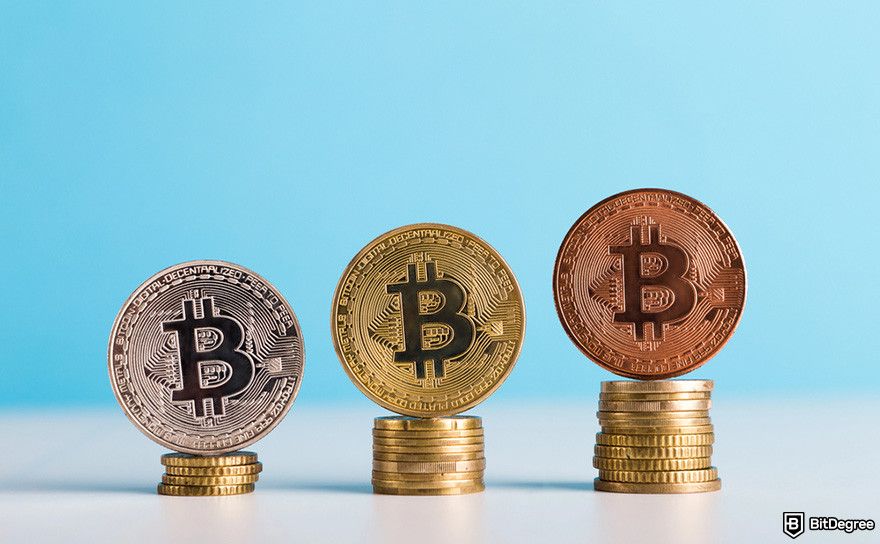
For example, if you believe ETH will rise, you could go long on ETH with 10x leverage. If ETH’s price rises 1%, your leveraged position would result in a 10% profit. However, if it drops 1%, your losses are also multiplied by 10. This can be exciting, but it’s essential to approach leverage with caution, considering the increased risk.
Swap Trading
Another feature worth noting in this GMX review is swap trading. Unlike the above mentioned leverage tool, where you’re opening long or short positions, swaps are straightforward asset exchanges.
In other words, this feature allows you to trade one asset for another at the current market price without taking on leverage. This is great for those who want to make quick trades without the complexity of managing a leveraged position.
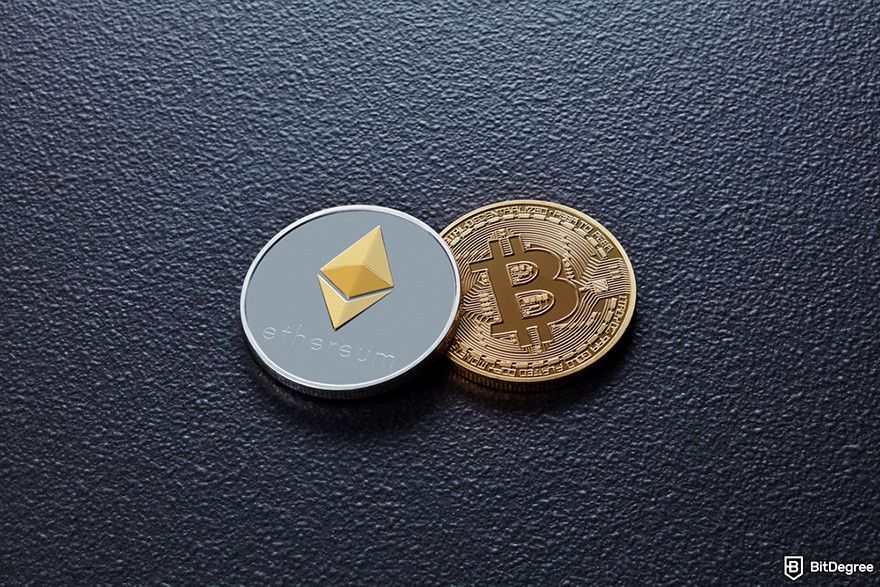
Swap trading on GMX is more beginner-friendly because it doesn’t come with the added pressure or risk of leverage. You’re simply converting one asset into another at the platform’s rates, which are generally competitive. However, GMX fees apply to swaps, and the cost may vary based on market factors like liquidity balance.
Market, Limit, and TP/SL Orders
GMX also offers flexibility in order types, which can be helpful depending on your trading style. There are three main types of orders:
- Market orders: These orders execute immediately at the current market price. They’re perfect if you want to enter or exit a position instantly, but you might experience slight slippage.
- Limit orders: Limit orders let you set a specific price at which you want your order to be executed. For example, if ETH is trading at $2,000 and you want to buy it only if it drops to $1,900, you can set a limit order at $1,900. The order will only execute if the price hits that level.
- Take Profit / Stop Loss (TP/SL): Take Profit and Stop Loss orders help manage risk. TP orders close a position once a target profit is reached, while SL orders automatically close the trade if it starts moving against you. This is especially helpful in leveraged trading, where quick price changes can lead to significant gains or losses.
These order types give traders greater control over their entry and exit strategies, allowing for more precise risk management and trade execution.
GMX Staking
Staking is another great feature offered by the platform. The tool lets you lock up your GMX tokens to earn rewards and contribute to the application's stability. When you participate in GMX staking, you receive a share of the platform's fees, which come from trading and borrowing feeds, among other user-generated activities.
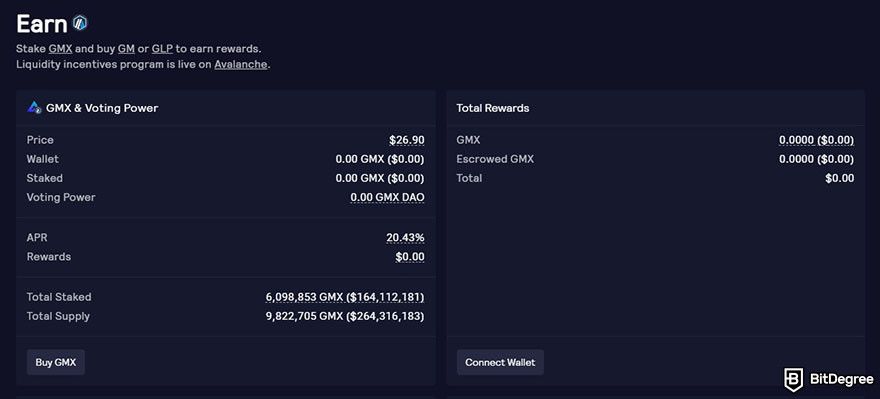
At the time of writing, the feature offers several attractive benefits. You can earn rewards in both ETH and AVAX, depending on the blockchain you’re using (Arbitrum or Avalanche). Additionally, the platform has introduced esGMX, a reward asset that can be staked for additional earnings or vested over time into actual GMX tokens. This approach promotes sustainable distribution while encouraging long-term holding.
That said, GMX staking doesn’t just benefit you—it helps the ecosystem by enhancing liquidity and supporting the platform’s governance. In addition, it’s an easy way to earn passive income while supporting the application.
How to Use GMX?
One last thing I want to cover in this GMX review is how to use the platform. Decentralized exchanges, like GMX, are famous for their simplicity. All you have to do is connect your crypto wallet, and you’re ready to go. That being said, if you’re used to using centralized exchanges like Binance or Kraken, you might be confused about where to start.
If that’s the case, don’t worry! Here is a general step-by-step guide on how to use GMX:
Step 1: Visit the GMX website and click “Launch App”. This will bring you to the trading platform.
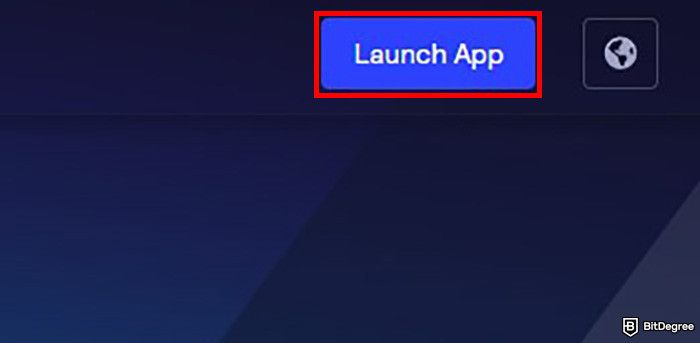
Step 2: Click “Connect Wallet”, choose your wallet provider, and follow the prompts to authorize the connection. Make sure you’re on the correct blockchain network (Arbitrum or Avalanche), as required by GMX.
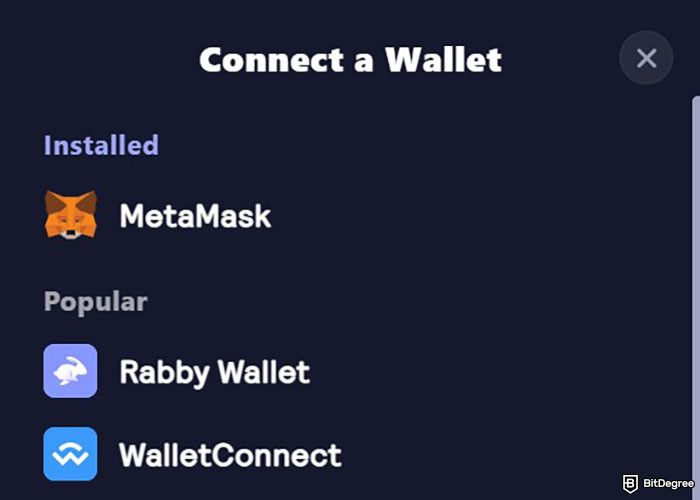
Step 3: Once your wallet is connected, make sure it holds the assets you plan to trade. You don’t need to deposit funds into GMX, as trades will interact directly with your wallet balance.
Step 4: With your wallet ready, decide between leverage and swap trading on GMX. Click the blue "Trade" button on the top menu.

Step 5: After selecting your trade type, set up your order by choosing from market, limit, or TP/SL (take profit/stop loss) orders.
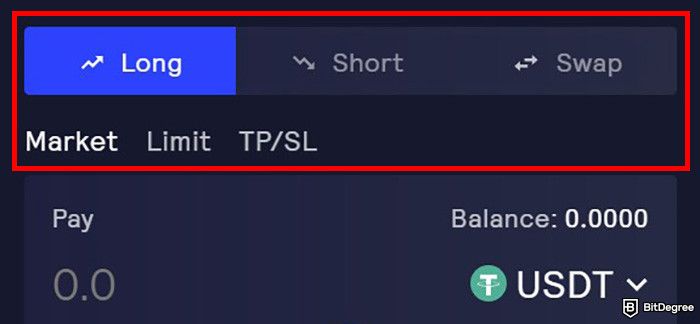
Step 6: Once you’ve configured your trade settings, review the order details and confirm the transaction. On GMX, orders execute directly on-chain, meaning you retain control over assets in your wallet throughout.
Step 7: When you’re ready to exit, simply close your position on the platform. This will finalize the trade, with any profits or losses reflected in your wallet balance.
After you complete the aforementioned steps, you should be all set.

- Secure and reliable
- Accepts fiat currencies
- Lots of trading options
- Reputable exchange
- Accepts fiat currencies
- Offers various trading options

- Huge trading variety
- Regulation-compliant around the globe
- Fair trading fees
- Beginner-friendly
- A wide array of features
- Vast number of different crypto coins & tokens

- Beginner-friendly
- Secure
- Decent trading and withdrawal fees
- Crypto.com Visa Card
- Automated tools & bots
- Ecosystem synergy with CRO
Conclusion
As I wrap up this GMX review, it’s clear that the platform brings a fresh perspective to decentralized trading. Unlike centralized giants like Binance, Kraken, and Bybit, the application offers a way to trade with full control over your assets, thanks to its wallet-based structure on Arbitrum and Avalanche.
So, what is GMX crypto exchange really all about? It’s a platform where traders can access high leverage, swap seamlessly, and benefit from GMX staking—all while navigating a transparent fee structure that differs from typical maker-taker models.
Of course, the application has its trade-offs, from smart contract risks to limited coin options. But for those who value decentralization and hands-on control over their trades, GMX’s innovative features are a game-changer.
Whether you’re an experienced trader looking for high leverage or just curious about decentralized trading, the platform is worth exploring as an alternative to traditional exchanges. Overall, it has a lot to offer, and I hope this GMX review helped clarify its unique place in the crypto landscape.
The content published on this website is not aimed to give any kind of financial, investment, trading, or any other form of advice. BitDegree.org does not endorse or suggest you to buy, sell or hold any kind of cryptocurrency. Before making financial investment decisions, do consult your financial advisor.
Scientific References
1. A. Aspris., Sean Foley., J. Svec., L. Wang.: 'Decentralized exchanges: The “wild west” of cryptocurrency trading';
2. D. He., Z. Deng., Y. Zhang., S. Chan., Y. Cheng., N. Guizani.: 'Smart Contract Vulnerability Analysis and Security Audit'.


